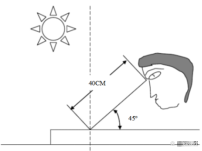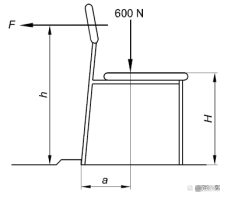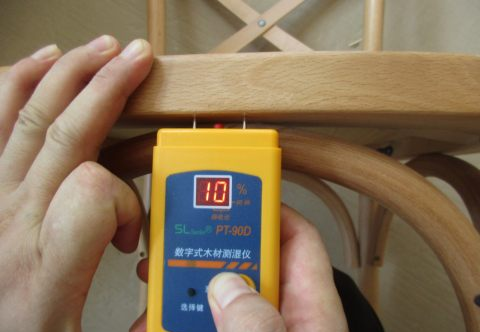Wood products refer to products made of wood as raw materials, assembled with hardware accessories, painted and glued. Wood products are closely related to our lives, ranging from sofas in the living room to beds in the room, as small as the chopsticks we usually use for meals. , its quality and safety are concerned, and the inspection and testing of wood products are particularly important.
In recent years, wooden products exported from China, such as wardrobes, chairs, and indoor and outdoor plant racks, are also very popular in overseas markets such as Amazon's e-commerce platform. So how to inspect wood products? What are the standards and main defects of wood products inspection?
1. General inspection method of wood products
2. Inspection standards and requirements for wooden furniture
3, wooden furniture assembly inspection standards
4, hardware inspection standards
5, carton inspection standards
6. Detailed Explanation of Defects of Wood Products
1. General inspection method of wood products
1.1. Check the sample according to the customer's signature. If there is no sample, it can be checked according to the clear pictures and product instructions provided by the customer.
1.2. Quantity of inspection: If the guest has no special requirements, sampling inspection shall be carried out according to the AQL standard.
1.3. Inspection environment: the brightness of the ambient light should be 600-1000LUX, and the light source should be higher than the examiner's head; there should be no reflections around the environment; the distance between the human eye and the object to be measured should be kept at 40cm, and the angle of the object to be measured should be 40cm. 45°

2. Inspection standards and requirements for wooden furniture
2.1. Visual inspection:
- The front surface is flat, no unevenness, no spikes.
- The other sides are flat, the color is uniform, there is no color difference with the front, no impurities, foam printing.
- The color difference between batches of the same type of products cannot exceed 5%, and there are no adverse phenomena such as exposed bottom, peeling, bubbles, sagging, pimples, orange peel, pitting, foam marks, impurities, etc.
- No defects such as bumps, excessive edges and corners, consistent thickness, and no deformation.
-3mm pits shall not exceed 3, and shall not gather within 10cm2; no bumps are allowed.
2.2. Product size, thickness, weight test:
According to the product specification or the sample test provided by the customer, measure the single product size, product thickness, product weight, outer box size, outer box gross weight, if the customer does not provide detailed tolerance requirements, +/-3% tolerance should be used.
2.3. Static Load Testing
Many furniture needs to be static load tested before shipment, such as tables, chairs, reclining chairs, racks, etc.
Test method: Load a certain weight on the load-bearing parts of the tested product, such as chair seat, backrest, armrest, etc. The product should not be overturned, dumped, cracked, deformed, etc. After the test, it will not affect the functional use.
2.4. Stability test
The load-bearing parts of wooden furniture also need to be tested for stability during inspection, such as chair seats, backrests, and sofa backs.
Test method: Use a certain level of force to pull the product and observe whether it is dumped. (Different products, the weight of the object used, the distance of the cable and the strength of the cable are different.) (The following is the product of the chair) F=20N

2.5. Shake test
After the sample is assembled, it is placed on a horizontal plate, and the base is not allowed to swing.
2.6. Odour test
All sampled products shall be free of unpleasant or pungent odors.
2.7. Barcode Scanning Test
Product labels and outer packaging labels can be scanned by barcode scanners and the scan results are correct.
2.8. Shock test
A load of a certain weight and size that falls freely onto the furniture bearing surface at a specified height. After the test, the base is not allowed to have cracks or deformation, which will not affect the use.
2.9. Humidity test
Use a standard moisture tester to check the moisture content of wooden parts.
Test method: Insert the wet tester about 6mm deep along the lines (if it is a non-contact device, the tester should be close to the test surface), and then read the result.
Requirements for wood moisture content: When the moisture content of wood changes greatly, uneven internal stress occurs inside the wood, and major defects such as deformation, warpage, and cracking occur in the appearance of the wood. Generally, the moisture content of solid wood in Jiangsu and Zhejiang areas is controlled according to the following standards: the solid wood material preparation section is controlled between 6% ~ 8%, the machining section and assembly section are controlled between 8% ~ 10% , the moisture content of the three plywood is controlled between 6% ~12% , and the multi-layer Plywood, particleboard and medium density fiberboard are controlled between 6% ~ 10% . The humidity of general products should be controlled below 12% . Warehouse Inspection - Wood Product Humidity Test

2.10. Transport drop test (not for fragile items)
Perform drop test in accordance with ISTA 1A standard, according to the principle of one point, three sides and six sides, drop the product from a certain height for 10 times, and the product and packaging should be free of fatal and serious problems. This test is mainly used to simulate the free fall that the product may be subjected to during handling, and to examine the ability of the product to resist accidental shocks.
3, wooden furniture assembly inspection standards
For many wooden furniture, the products received by the final consumers are semi-finished products, which need to be installed by consumers themselves. When inspecting the goods, the inspectors need to distinguish materials, components, hardware, processes, specifications, instructions and other related accessories. Completely install the product according to the steps in the manual, the purpose is to check whether the product structure and manufacturing accuracy are insufficient, and also to verify the correct operation of the manual.
Assembly principle: dense, flat, firm, accurate
Assembly general inspection standard:
3.1. All accessories must be accurate before assembly, including materials, components, hardware, processes, specifications, instructions, etc. must be correctly matched;
3.2. All assembly joints must be tightly connected, firm and free of cracks, the datum plane is flat, placed in the right direction, the relevant diagonal lines are equal, and the symmetrical and harmonious;
3.3. All assembled glues must be used correctly according to the quality requirements;
3.4. The connection parts of all assembly parts must be glued, and the glue should be applied evenly and adequately. After assembly, there is glue overflowing all around;
3.5. Gluing method: Before gluing, blow the dust off the parts to be glued with an air gun. The glue in the air must be distributed in a ring, and all four walls are glued; the long hole (mother tenon) glue is applied to the larger On the two side walls of the mortise and tenon; the parts with larger male tenon shoulders need to be coated with glue;
3.6. The spilled glue should be wiped clean in time, and there should be no glue left to affect the painting.
Assembly Requirements:
1. The reference standard for the diagonal length of the opposite side length error: ≥1000 ≤1.5 <1000 ≤1.0, for example: if the diagonal of the crib headboard and guardrail is generally within 1000mm-1400mm, the diagonal length error should be Controlled below 1.5mm.
2. The warpage of the piece (panel), 700≤diagonal length<1400≤1.5, diagonal length<700≤1.0, for example: place the guardrail or the head of the bed on a horizontal reference plane, normally the four corners should be stable , if there is warpage on one or both sides, the range of this warpage should be controlled below 1.5mm.
3. Foot stability mm ≤ 1.5; for example: an assembled bed or furniture requires four feet to be parallel to the ground, but if there is warping, the range should be controlled below 1.5mm.
4. Adjacent side verticality mm Panel Diagonal length ≥1000 ≤1.5, <1000 ≤1.0, refers to the sag between the four corners of the assembled furniture and the ground, and the value obtained by the comparison of the diagonal.
4, hardware inspection standards
4.1. The specifications and dimensions meet the requirements, the allowable deviation of the length of the screws is ±1mm, the nail caps should be round, without cracks, the tooth grades are clear, the male and female are freely matched, there should be no obvious bending phenomenon, and no serious scratches;
4.2. No rust, no scratches, no deformation, consistent size, reasonable and firm structure, and consistent color as a whole;
4.3. Good compatibility with other related accessories;
4.4. Appearance and shape meet customer requirements, and meet the requirements of templates, drawings or prenatal samples;
4.5. The electroplating is firm and can not fall off.
5, carton inspection standards
5.1. The appearance is neat and clean, the ratio of printed materials to the carton is well-proportioned and reasonable, and the handwriting is clear;
5.2. The hardness and toughness of the carton should meet the requirements of the purchase order;
5.3. The joints of the cartons are required to be nailed tightly and neatly;
5.4. The size of the carton should meet the ordering requirements;
5.5. Do not accept chromatic aberration, ink and other pollution;
5.6. The carton and shipping mark should be accurate and consistent with the business information;
5.7. Do not accept scratches, wrinkles and layers;
5.8. The humidity is controlled within 12 degrees.
6. Detailed Explanation of Defects of Wood Products
6.1. The products after wood processing are not allowed to have the following defects:
- The parts made of wood-based panels should be edge-sealed, that is to say, in principle, wood-based panels (multi-layer boards or medium density boards) are required to be completely closed. All the outside parts are required to be sealed, and the sealing method can be painted or other materials.
- There are degumming, bubbling, seams at splicing and clear glue after the covering material is pasted;
- Looseness, separation, or fracture at the joints of parts, tenon-hole joints, plate mounting parts and various supports;
- The appearance of the product is uneven and asymmetrical, with round lines and rounded corners;
-After engraving and wood turning, there are asymmetric patterns and lines, uneven bottom of the shovel, and knife marks and scratches; the surface of the product is not polished, the inner surface is not polished, and the rough parts have saw hairs and scars, etc. ;
6.2. The products after paint processing are not allowed to have the following defects:
- The whole product or complete set of products has obvious color difference; the surface coating of the product has wrinkled paint film, sticky and leaking paint;
- The paint film coating has obvious haze, white flute, white spot, oily white, sagging, shrinkage, bristles, powder accumulation, slag, scratches, bubbling and peeling;
- Depressions, pits, scratches, cracks, chipping and cutting edges exist on the surface of soft and hard cladding materials;
- The unpainted parts of the product and the interior of the product are not clean;

3. After the hardware accessories are installed, the following defects are not allowed:
- The fittings are missing parts, and there are installation holes without installation parts; the installation parts are missing nails or through nails;
- The moving parts are not flexible to start; the fittings are not firmly installed and loose;
- There are burrs around the mounting holes.